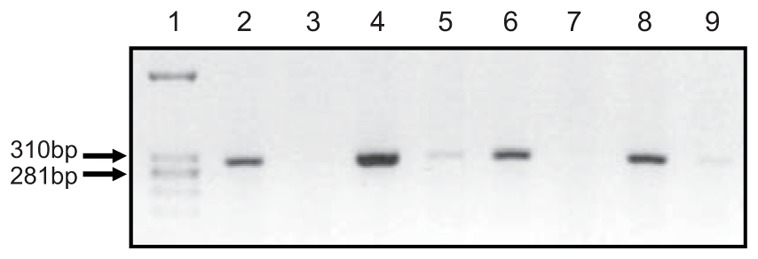Fig. 2.

Semi-quantitative RT-PCR analysis of (teto)7-FGF18 transgene expression in the 8 mouse pup lung samples used for microarray hybridization. Transgene-specific primers were used as stated in M&M, 25 amplification cycles were run. Lane 1, molecular-size ladder; lane 2, sample D4, SP-C-rtTA/(teto)7-FGF18 (double transgenic), litter 1; lane 3, sample D2, (teto)7-FGF18 (single-transgenic control), litter 1; lane 4, sample D34, SP-C-rtTA/(teto)7-FGF18, litter 2; lane 5, sample D40, (teto)7- FGF18, litter 2; lane 6, sample D48, SP-C-rtTA/(teto)7-FGF18, litter 3; lane 7, sample D50, (teto)7- FGF18, litter 3; lane 8, sample D52, SP-C-rtTA/(teto)7-FGF18, litter 4; lane 9, sample D58, (teto)7-FGF18, litter 4. FGF18-transgene expression was manifest in double-transgenic pups bearing both the inducible FGF18 transgene and the activator construct whereas it was not or barely detectable in their littermates bearing only the FGF18 transgene.
